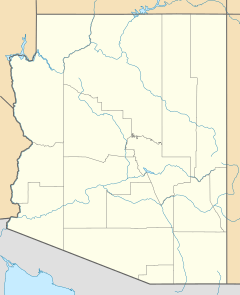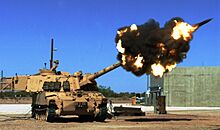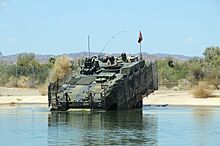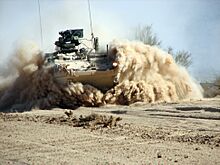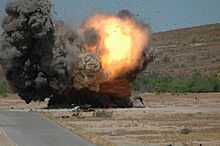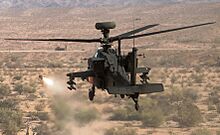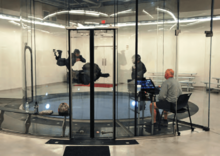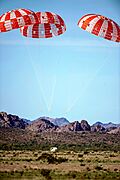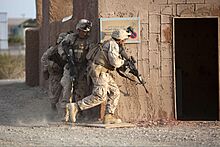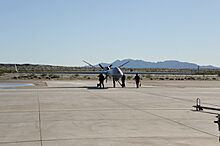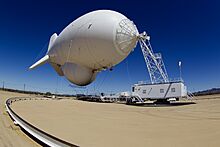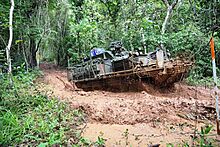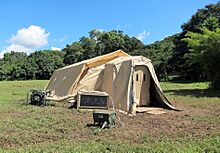Yuma Proving Ground facts for kids
Quick facts for kids Yuma Proving Ground |
|
|---|---|
| Part of |
|
| La Paz County and Yuma County, Arizona Near Yuma, Arizona |
|
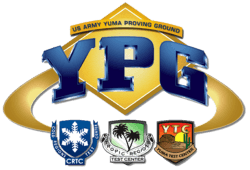
Yuma Proving Ground logo
|
|
| Coordinates | Lua error in Module:Coordinates at line 614: attempt to index field 'wikibase' (a nil value). |
| Type | Military proving ground |
| Site information | |
| Owner | |
| Controlled by | |
| Site history | |
| Built | 1943 |
| In use | 1950 – present |
| Garrison information | |
| Current commander |
COL John Nelson |
| Occupants |
|
Yuma Proving Ground (YPG) is a special place where the U.S. Army tests its equipment. It has different test centers for various environments. Its main part, the Yuma Test Center (YTC), is one of the biggest military installations in the world. YPG helps make sure that military gear works well in any part of the world.
YPG's main office is at YTC. It is located in southwest Arizona, about 30 miles (48 km) north of the city of Yuma.
The Army needs to test equipment in extreme natural environments. YPG manages testing in three of these important environments. This makes sure American military equipment works as it should, no matter where soldiers are. YPG tests equipment and weapons in three main places:
- The Cold Regions Test Center in Fort Greely, Alaska.
- The Tropic Regions Test Center, which operates in places like Panama, Honduras, Suriname, and Hawaii.
- The Yuma Test Center (YTC) in Arizona.
All these centers focus on "environmental testing." This means YPG is the Army's expert in testing gear in different weather conditions.
Contents
History of Yuma Proving Ground
The U.S. Army has been in Yuma for a long time. In 1850, Fort Yuma was built. It was on a hill overlooking the Colorado River. Soldiers at Fort Yuma kept the peace and protected a key river crossing. Thousands of travelers used this crossing every year.
In 1865, the Army built another facility. It was called the Yuma Quartermaster Depot. This place was a supply base for Army posts across Arizona and New Mexico. Supplies arrived by riverboats. Then, they were moved from the depot to military outposts using wagons. Both Fort Yuma and the Yuma Quartermaster Depot closed in the 1880s. The Army did not return to Yuma permanently until World War II.
Yuma Proving Ground started in 1943. It was first known as Camp Laguna and the Army Corps of Engineers Yuma Test Branch. The Yuma Test Branch was on the Colorado River. It tested combat bridges, vehicles that could go on land and water, and boats. Thousands of soldiers trained at Camp Laguna. They prepared for battles around the world. You can still find old campsites and tank trails at the proving ground today.
Camp Laguna closed after World War II. The Yuma Test Branch also closed in 1949. But it reopened two years later as the Yuma Test Station. In 1962, it was renamed Yuma Proving Ground. It became an important part of the U.S. Army's testing efforts. In 1973, it officially got its full name: U.S. Army Yuma Proving Ground.
Since its early days, Yuma Proving Ground has tested military equipment in the desert. Today, it tests many other things too. This includes artillery, ammunition, aircraft weapons, and air delivery systems. YPG has invested a lot in technology. It also has many skilled workers. This makes it a very important part of the local community.
Yuma Test Center (YTC)
The Yuma Test Center (YTC) covers a huge area. It is about 1,308 square miles (3,387 km²) of the Sonoran Desert. YTC tests almost every weapon used in ground combat. Most long-range artillery testing for the U.S. Army happens here. This area is far from cities, so noise is not a problem. The airspace controlled by YTC is over 2,000 square miles (5,180 km²).
YTC has the longest overland artillery range in the nation. It is about 40 miles (64 km) long. It also has the best helicopter weapon test range in the Department of Defense. There are over 200 miles (322 km) of special roads for testing military vehicles. More than 600 miles (966 km) of fiber-optic cable connect test locations. YTC also has a very modern facility for testing mines and demolitions.
Realistic villages and road networks have been built here. They look like urban areas in Southwest Asia. These are used to test ways to stop roadside bombs. It is thought that about 80 percent of the Army's wheeled vehicles can be tested on these tracks.
More than 3,000 people work at YTC. Most of them are civilians. YTC is the biggest employer in Yuma County.
Every year, YTC is very busy. Over 500,000 artillery, mortar, and missile rounds are fired. About 36,000 parachute drops happen. Military vehicles drive over 200,000 miles (321,869 km). More than 4,000 flights take off from Laguna Army Airfield.
About 10 percent of YTC's work is training. Many military units come here for desert training. This is especially true before they go overseas.
YTC has clean air and low humidity. It gets only about 3 inches (76 mm) of rain each year. It also has about 350 sunny days annually. These conditions are almost perfect for testing and training. Unlike other military bases, there are no problems with nearby cities or noise.
YTC tests improvised explosive devices (IEDs). These are commonly known as roadside bombs. They were a major threat to American soldiers in Iraq and Afghanistan. Hundreds of unmanned aerial vehicles (drones) fly at YPG each year. They use the six airfields located at YTC. Helicopters and planes also conduct parachute drops for people and cargo.
Many friendly countries also visit YTC. They come to conduct their own test programs.
The General Motors Desert Proving Ground – Yuma opened at YTC in 2009. General Motors spent over $100 million to build it. This new facility allows both General Motors and Army vehicle testers to work all year.
YTC offers many things for testing, evaluation, and training:
- Ground weapons, from small guns to long-range artillery.
- Helicopter weapons and targeting systems.
- Artillery and tank ammunition.
- Parachutes for cargo and people, including guided systems.
- Land mines and systems to remove them.
- Tracked and wheeled vehicles in a desert environment.
- Tests for smart weapon systems without vibration or interference.
- Laguna Army Airfield, with two runways (6,000 ft and 5,150 ft).
- 12 drop zones and many airstrips for drones.
- A 55-mile (89 km) overland artillery range, the longest in the nation.
- Over 200 miles (322 km) of improved roads for vehicles.
- Modern fiber optics systems to collect and send data in real time.
- Special facilities to test ways to defeat roadside bombs.
-
An M1 main battle tank climbs a steep ramp during performance testing at YTC.
-
Testing ways to counter roadside improvised explosive devices at YTC.
-
An AH-64D attack helicopter fires an AGM-179 air-to-surface missile at YTC.
-
NASA tests the parachute system for its Orion Spacecraft at YTC.
-
Marines get ready to enter a building during a practice helicopter raid at YTC.
-
German soldiers test new assault rifles at YTC.
Tropic Regions Test Centers (TRTCs)
The Tropic Regions Test Centers (TRTCs) test equipment in hot, wet, and humid environments. These centers operate in various locations. This ensures that military gear can handle jungle and tropical conditions.
-
Testing how materials rust and wear down at TRTC's Breakwater Exposure Site in Central America.
Cold Regions Test Center (CRTC)
The Cold Regions Test Center (CRTC) focuses on testing equipment in very cold places. This center is located at Fort Greely, Alaska. It makes sure that military vehicles and gear can work in freezing temperatures and snowy conditions.


